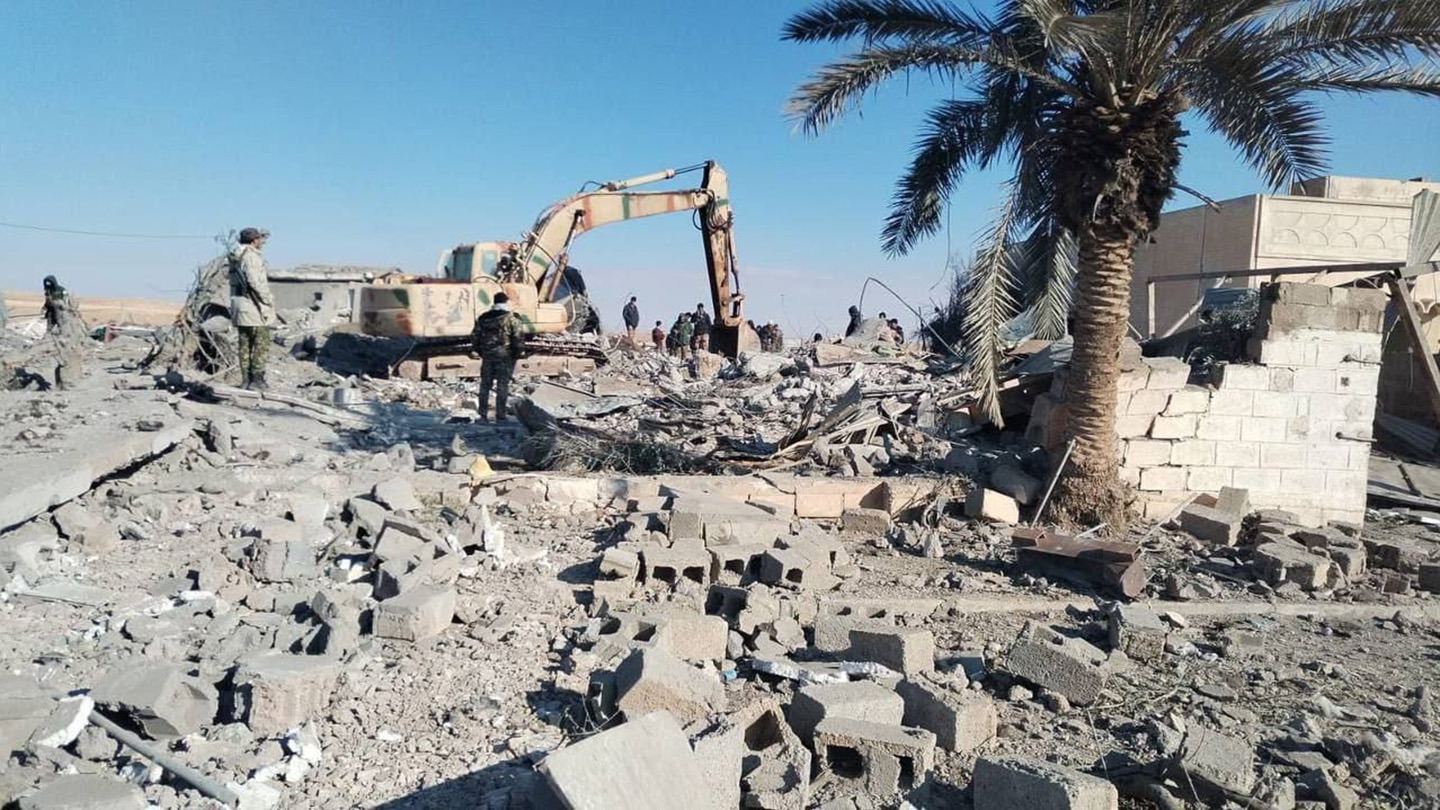As the U.S. assesses the results of its first wave of retaliatory airstrikes against Iranian forces and their proxies in Iraq and Syria, Tehran-linked militias in the region have delivered mixed messages, vowing revenge but also saying they don’t want to escalate tensions.
The airstrikes, carried out in response to the deadly Jan. 28 drone attack on U.S. troops in Jordan, killed dozens of Iranian-backed militia fighters, as well as civilians, according to claims by Iraq, Syria, Iranian-backed militias and a monitoring group. The War Zone cannot independently verify those assertions and we’ve reached out to the U.S. military for an updated bomb damage and casualty assessment, which is still being conducted, a U.S. defense official told The War Zone on Saturday.
As that assessment continues, questions remain about the deterrent value in this first of what are said to be a series of U.S. strikes against groups it says have carried out more than 160 attacks on its forces in the region. There have been new claims by militia groups of attacks on U.S. forces in Iraq and Syria in the wake of the airstrikes by a mix of B-1B bombers flying from the U.S. and fighter aircraft based in the region. Meanwhile, the U.S and allies carried out a new series of airstrikes against the Iranian-backed Houthis in Yemen.
Regional Reaction
“The Iraqi Al-Nujaba Movement confirms that the Islamic Resistance will respond to the American aggression in what it deems appropriate at the time and place it determines,” the group threatened, according to the Hezbollah-aligned Al Mayadeen Telegram channel. Al-Nujaba is part of the umbrella group of militias known as the Islamic Resistance in Iraq and notably used language similar to statements made by U.S. President Joe Biden.
However, Hussein al-Mosawi, spokesperson for the group, told The Associated Press in Baghdad that “we do not wish to escalate or widen regional tensions.”
Mosawi added that the targeted sites in Iraq were mainly “devoid of fighters and military personnel at the time of the attack.”
The Popular Mobilization Forces (PMF) in Iraq – a group of largely Shia militias now part of the Iraqi security infrastructure but generally acting independently – “confirms that the American targeting is a blatant violation of the sovereignty of the Iraqi state, and declares its readiness to implement any order from the Commander-in-Chief of the Armed Forces,” the PMF said, according to Al Mayadeen.
The office of Iraqi Prime Minister Mohammed Shia’ Al Sudani decried the U.S. airstrikes.
“The American administration committed a new aggression against the sovereignty of Iraq, as the locations of our security forces, in the Akashat and Al-Qaim regions, as well as neighboring civilian places, were bombed by several American aircraft,” Al Sudani’s office said on Twitter. “This blatant aggression led to 16 martyrs, including civilians, in addition to 25 wounded. It also caused losses and damage to residential buildings and citizens’ property.”
Al Sudani’s office disputed comments made last night by White House National Security Council spokesman John Kirby that Iraq was informed ahead of time by the U.S.
“The American side then deliberately deceived and falsified the facts, by announcing prior coordination to commit this aggression, which is a false claim aimed at misleading international public opinion and disavowing legal responsibility for this rejected crime in accordance with all international laws and laws. This aggressive strike will put security in Iraq and the region on the brink of the abyss, and it also contradicts efforts to establish the required stability.”
The U.S. airstrikes, which dropped 125 munitions on 85 targets at seven locations in Iraq and Syria were also condemned by Iran, Syria and the Hezbollah militia in Lebanon.
Iranian Foreign Ministry Spokesman Nasser Kana’ani lashed out at the U.S., cautioning that “Washington’s adventurism will further escalate tensions in the region,” according to the official FARS news agency.
Kana’ani said the U.S. airstrikes were “an adventurous act” and “another strategic mistake” which will have no result other than “the escalation of tension, instability and insecurity in the region.
He added that “the aggression is a violation of the sovereignty and territorial integrity of the two countries, international law and the United Nations Charter.”
In addition, Kana’ani blasted “the full support of the United States for four months of the Israeli relentless bombardment of Gaza and the regime’s attacks against Palestinians in the occupied West Bank, as well as assault the against Yemen and violating the sovereignty and territorial integrity of the country.”
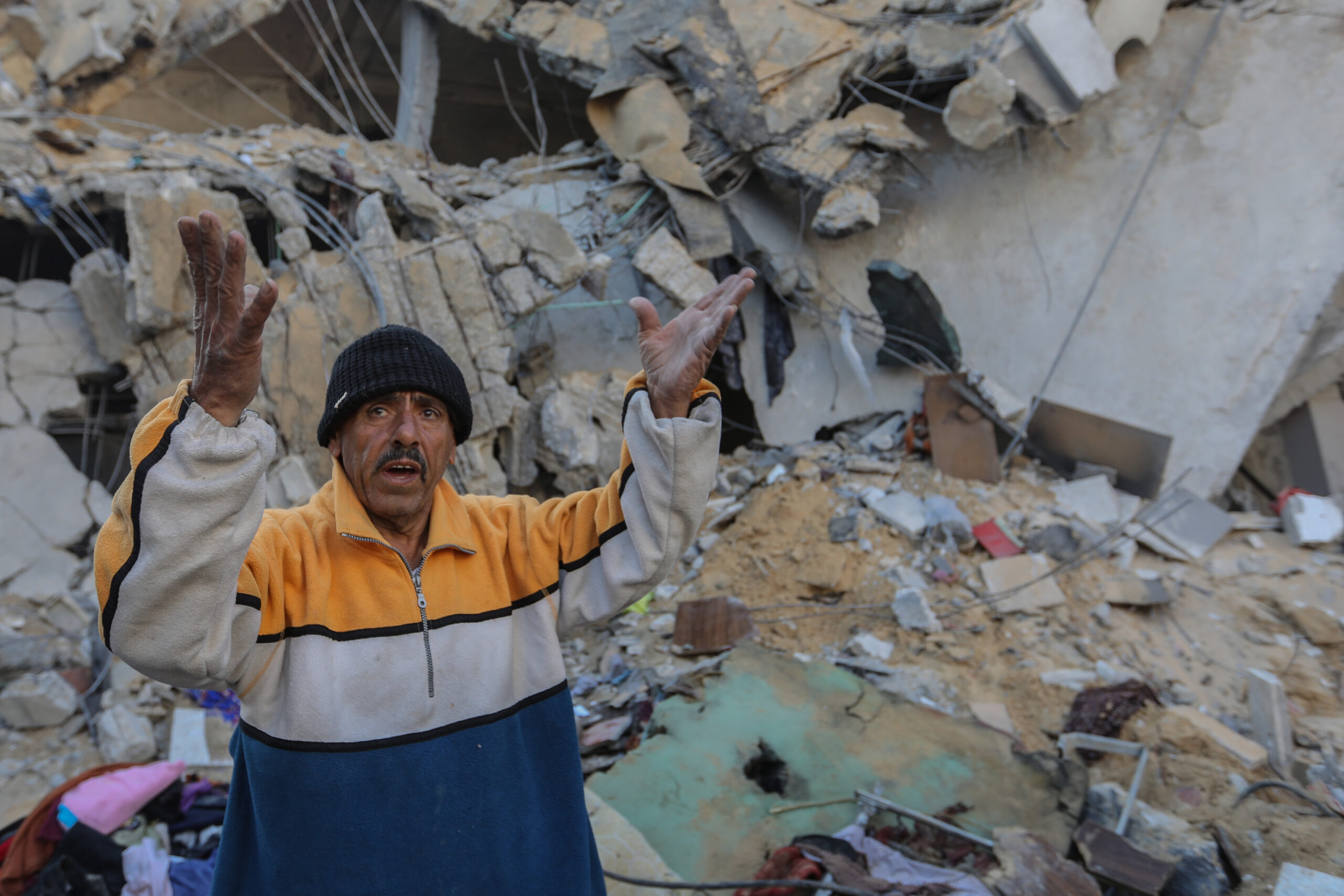
Syrian officials said the airstrikes were “a blatant aerial aggression on a number of sites and towns in the eastern region of Syria, near Iraqi borders, leaving many civilian and military martyrs, inuring others and causing huge damage to private and public properties,” a military statement announced,” according to the official Syrian Arab News Agency (SANA).
The statement added that the region targeted by the U.S. attacks in eastern Syria “is the same where the Syrian army fights remnants of the Daesh terrorist organization, and this affirms that the US is involved and allied with this origination.”
“The US aggression today dawn has no justification, but it is an attempt to weaken the Syrian army’s capability to fight terrorism,” the statement added.
The Iranian-backed Hezbollah “condemns the American aggression against Syria and Iraq, and points out that it reveals the United States’ lie in not expanding the conflict in the region,” according to Al Mayadeen.
Damage Report
During a Friday night media briefing, Lt. Gen. Douglas Sims II, Director of Operations for the Joint Staff, told reporters that the airstrikes were meant to limit civilian casualties and damage the ability of the IRGC and Iranian-backed militias to continue carrying out attacks.
While the Pentagon has yet to release a bomb damage assessment, the London-based Syrian Observatory for Human Rights (SOHR) said while 23 militia members were killed in and around Deir Ezzor in eastern Syria, the ultimate damage to their operations was limited.
SOHR stated that 13 militia members were killed in American airstrikes on positions in Al-Mayadeen city while another 10 were killed in airstrikes on positions in Deir Ezzor countryside.
There is an ongoing “state of alert, redeployment and repositioning of Iranian militias and the evacuation of many positions, for fear of more strikes in the coming hours,” SOHR reported. “The American strikes on Iranian militias in the areas of Deir Ezzor and its countryside caused confusion for those militias, but they do not end the Iranian presence in the region, as Iran has at least 20,000 Syrian and non-Syrian fighters spread over a geographic area extending from Al-Bokamal on the Syrian-Iraqi border, passing through Al-Mayadeen and Deir Ezzor, all the way to Jabal Al-Bushri, the depth of the Syrian desert and the T2 station.”
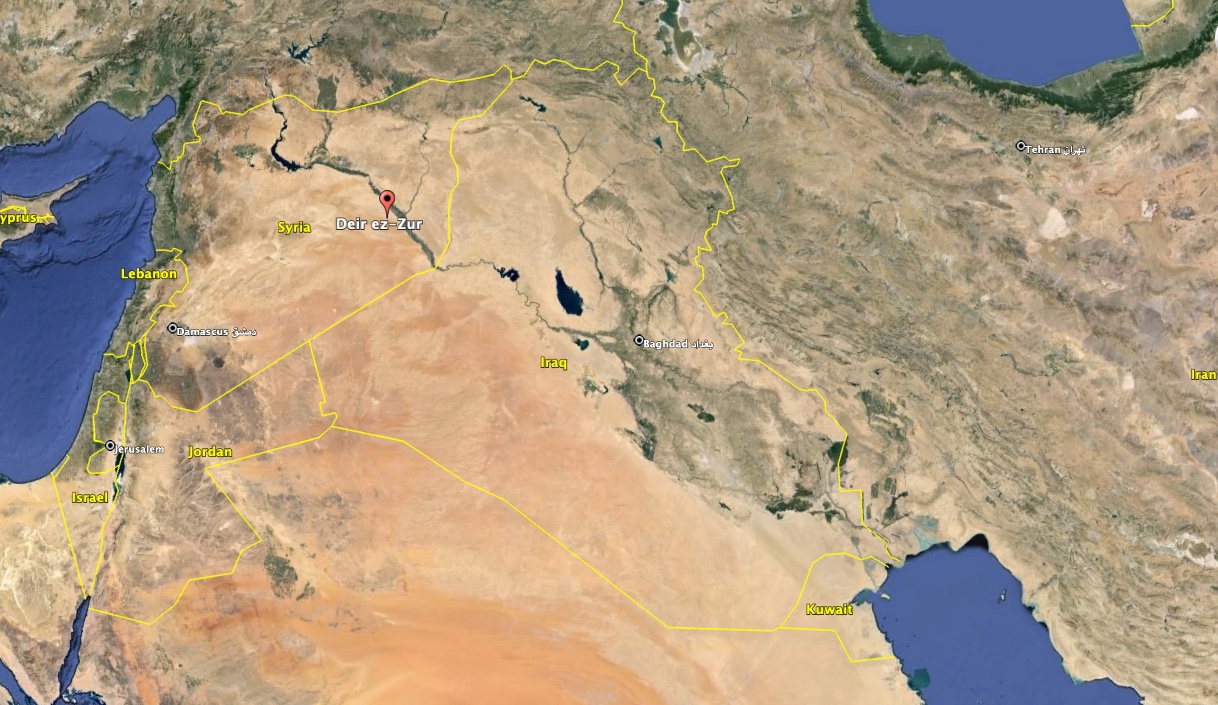
SOHR added that there have been “intense flights by American drones over Al-Bokamal city in the eastern countryside of Deir Ezzor, near the Syrian-Iraqi border, to monitor the developments and follow the movements in the region.”
Meanwhile, the Iranian-backed militias in Iraq say airstrikes killed 16 members of Khataib Hezbollah and injured 25 others.
The War Zone cannot independently verify any of these claims.
Still, at least one major militia ammunition storage site was totally destroyed by the airstrikes, as we noted earlier today in our own battle damage assessment based on available satellite imagery.
Though the U.S. airstrikes were designed to stop further attacks, militias have claimed additional attacks on U.S. force in Iraq and Syria Saturday. The War Zone is unable to independently confirm that. A U.S. defense “was unaware of” any such attacks.
Fighting The Houthis
The Red Sea region, meanwhile, remains in turmoil.
“The militaries of the United States and United Kingdom, with support from Australia, Bahrain, Canada, Denmark, the Netherlands, and New Zealand conducted an additional round of proportionate and necessary strikes against 36 Houthi targets across 13 locations in Yemen in response to the Houthis’ continued attacks against international and commercial shipping as well as naval vessels transiting the Red Sea,” the Pentagon said in a statement Saturday afternoon.
Earlier, U.S. Navy warships and aircraft carried out a number of attacks on Iranian-backed Houthi forces in Yemen as well as defended against aerial threats in the past 24 hours, according to U.S. Central Command. Those actions, and others taken by the command, were separate, preemptive strikes, a U.S. official told The War Zone.
At about 7:20 p.m. local time, CENTCOM forces carried out a preemptive strike against six Houthi anti-ship cruse missiles preparing to launch against ships in the Red Sea, CENTCOM said.
That followed several engagements against the Houthis on Feb. 2.
At about 10:30 a.m. local time, the Arleigh Burke class guided missile destroyer USS Carney “engaged and shot down one unmanned aerial vehicle (UAV) over the Gulf of Aden,” CENTCOM said. “There were no injuries or damage reported.”
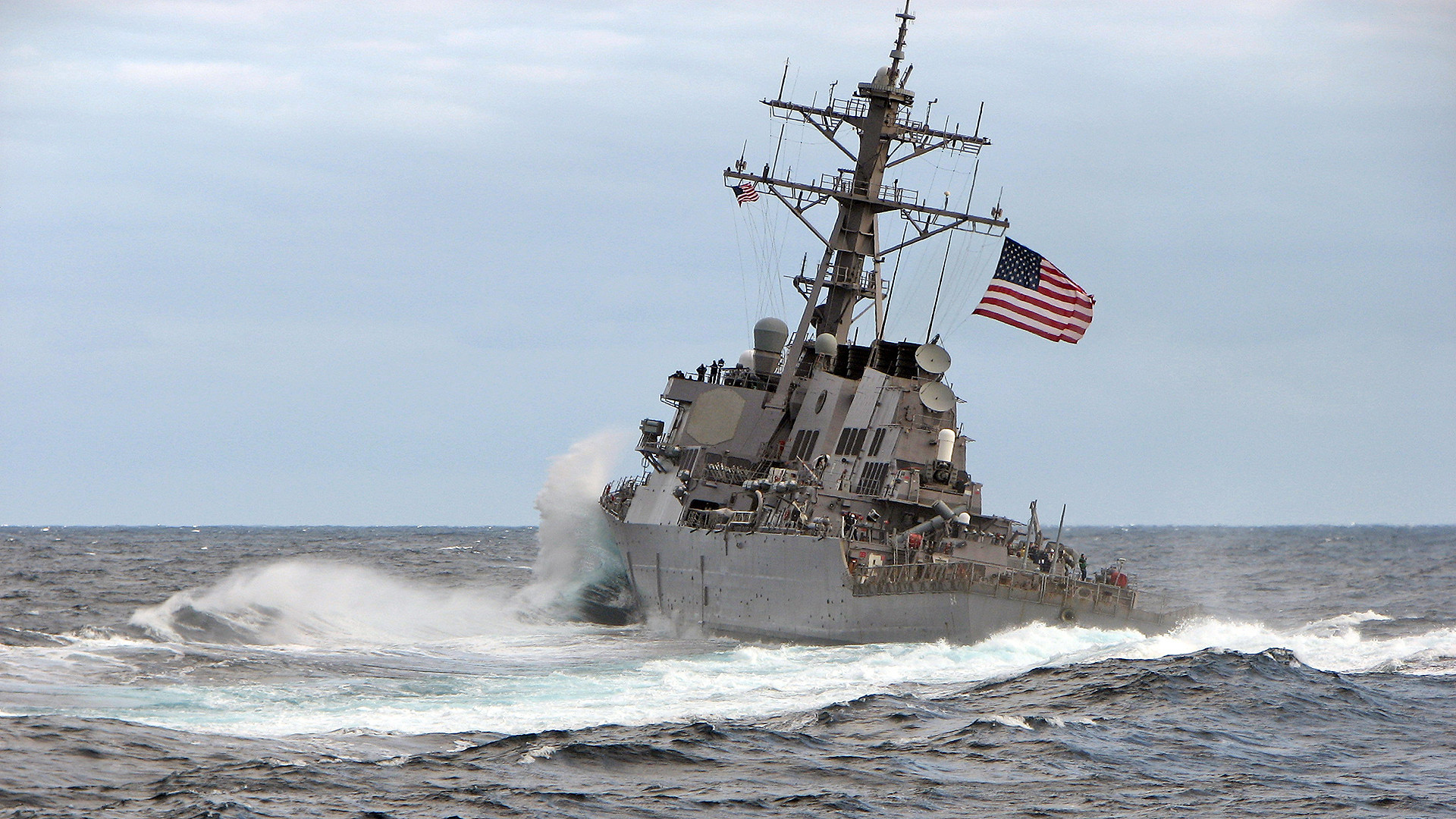
Later that same day, at approximately 4:40 p.m. local time, CENTCOM forces “conducted strikes against four Houthi UAVs that were prepared to launch” presenting “an imminent threat to merchant vessels and the U.S. Navy ships in the region. U.S. forces subsequently struck and destroyed the UAVs in self-defense.” Then, at 9:20 p.m. local time, the Arleigh Burke class guided missile destroyer USS Laboon (DDG 58) and F/A-18s from the Dwight D. Eisenhower Carrier Strike Group “engaged and shot down seven UAVs over the Red Sea. There were no injuries or damage reported.”
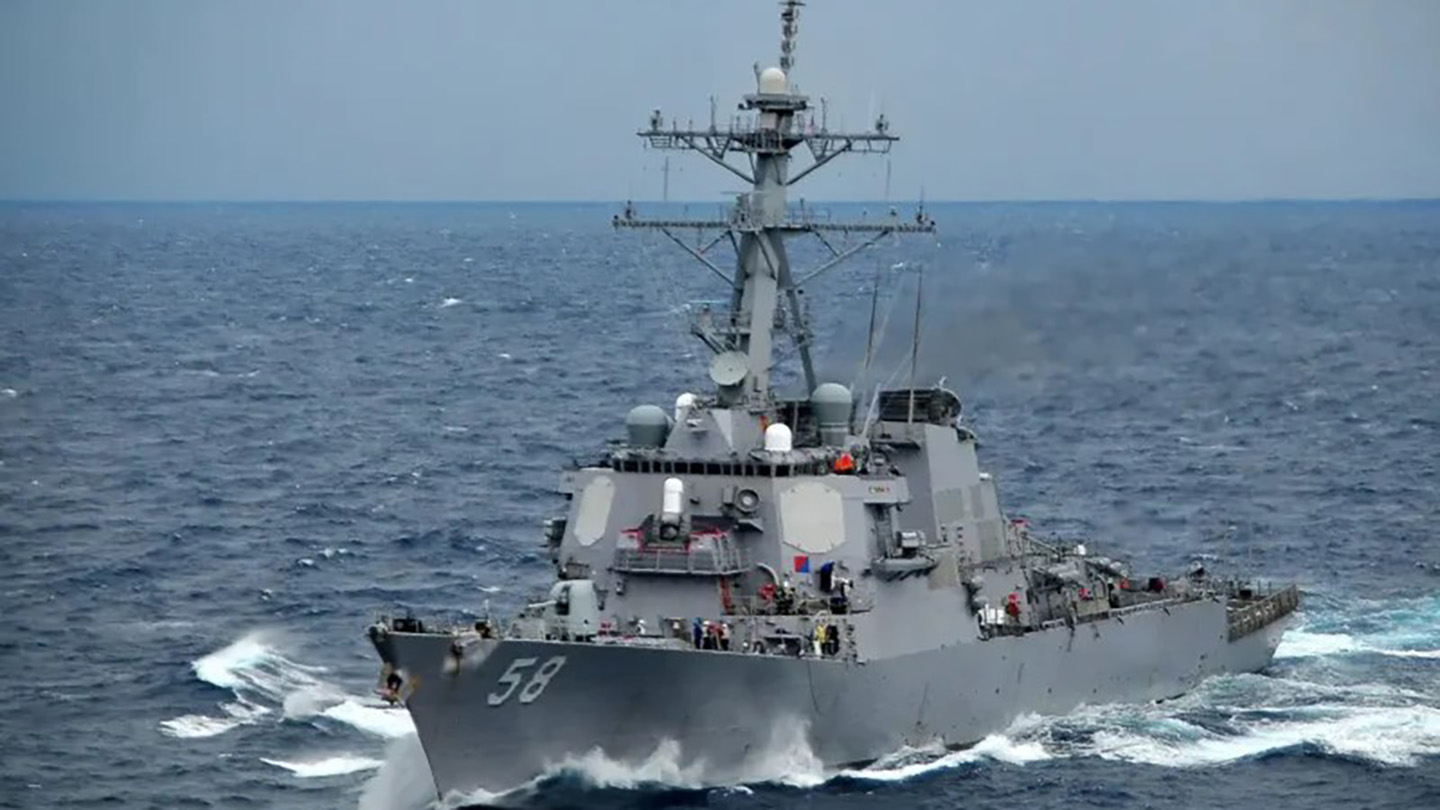
What Now?
We asked former CENTCOM commander and retired Army general Joseph Votel – now a distinguished senior fellow at the Middle East Institute – for some insights into how this all plays out.
TWZ: Did the IRGC and proxies have too much time to prepare?
JV: Probably – but this may have been unavoidable for several reasons. First off – they knew immediately that they had crossed a red line and likely scattered. Secondly, the US was always going to be deliberate about this strike – it is the way we do things – so we were bound to miss a few opportunities. Finally, the weather was bad this week and I suspect they may have wanted to wait until it cleared to support precision and post-strike assessment.
TWZ: Do you see this having any real deterrence why or why not?
JV: It was an important strike in both scope and scale. Like all strikes – the effects will be fleeting. Terrorist organizations and militias are adaptable and often capable of recovering from these strikes. That is why constant pressure is so important to wear them and significantly attrit their capabilities and will. We will have to be patient and see what the rest of the “campaign” looks like. Clearly, there is a strong message to Iran that we can do what we want to them – I think that was the subliminal message behind the employment of B-1s.”
TWZ: What would you recommend as a follow up?
JV: Some of these targets may require re-attack and we should expand to the broader Iranian-supported militia network. We must also be looking at very specific Iranian targets in Iraq, Syria, and Yemen. We need to keep Iran thinking about its vulnerabilities across the region and our ability to strike them at will.
TWZ: Several Iranian proxies have threatened further attacks against the US in retaliation while the Iraqis have condemned the US strikes. Do you see this further escalating the situation?
JV: Again, we will have to wait and see. I think it is possible that we could see some reaction by the Houthis who are trying to posture as the most engaged part of the “axis of resistance.” We could also see some attacks by militia groups in Iraq and Syria trying to make a name for themselves.
TWZ: From the messaging coming out of Tehran, what’s your sense of how the Iranians react?
JV: I think they will talk a lot but wait and see how this plays out. They will be wondering what’s coming next and how their activities around the region may be further struck or impacted. They also have to be thinking about our other capabilities/elements of power – diplomacy, info ops, economic, cyber, and [special operations force] SOF / IC [intelligence community] capabilities. It is important for the U.S.to keep reminding everyone that Iran is the source for all these problems on the periphery of the Gaza conflict.
U.S. officials say Friday night’s attacks were just the first in a series. How many more targets will be hit, how much damage is caused and whether these operations will truly deter future deadly acts against U.S. personnel in the region are all unknowns at this point in time.
Update 5:47 PM Eastern –
CENTCOM released its statement on the joint attacks on the Houthis as well as images from those strikes.
Contact the author: howard@thewarzone.com
